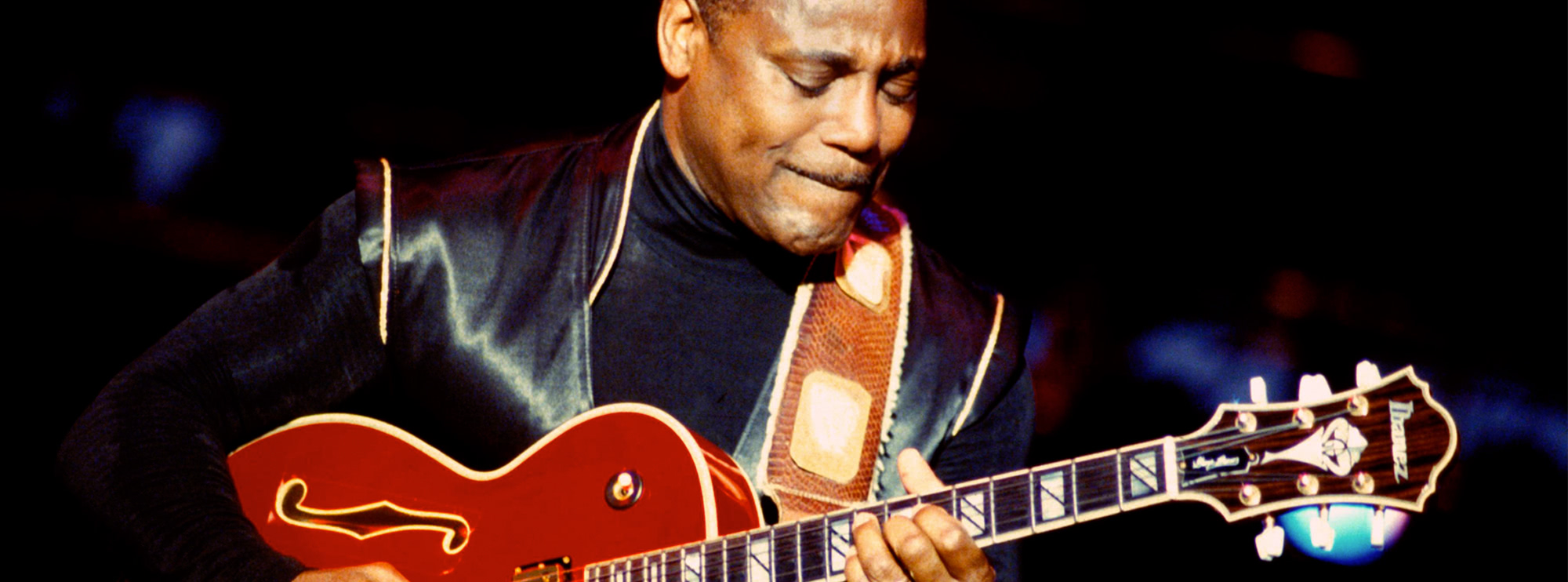The Ocean by Led Zeppelin - Guitar Lesson Overview
"The Ocean" by Led Zeppelin is a dynamic and riff-driven track from the band's 1973 album Houses of the Holy. Known for its infectious groove, unique time signatures, and guitar work that blends blues, rock, and funk, "The Ocean" showcases Jimmy Page's signature style. Our note-for-note guitar lesson for "The Ocean" focuses on several key techniques found in the song, including hammer-ons, barre chords, palm muting, and double stops. Learning these techniques will help you capture the essence of this iconic track and improve your overall guitar proficiency. This lesson is taught by Danny Gill.
Key Techniques in "The Ocean"
Hammer-Ons
Hammer-ons are a fundamental guitar technique that allows you to quickly transition between two notes on the same string by "hammering" your finger down onto the fretboard without picking the string again. In "The Ocean," hammer-ons are used to add fluidity to the riffs and create a seamless connection between notes. This technique gives the song its smooth, flowing feel, particularly during the main riff and solo sections.
Mastering hammer-ons will enhance your ability to play fast and fluid passages, improving your overall dexterity and precision. Hammer-ons also help create a more legato (smooth) sound, which is crucial for capturing the feel of "The Ocean." In this lesson, we’ll guide you through the proper technique for executing hammer-ons and show you how to incorporate them into your playing.
Barre Chords
Barre chords are an essential tool for any guitarist, allowing you to play movable chord shapes up and down the neck. In "The Ocean," barre chords form the backbone of the rhythm guitar parts, giving the song its powerful and driving sound. Barre chords allow you to play full, rich chords by barring multiple strings with your index finger, while the other fingers create different chord shapes.
Learning to play barre chords will not only help you master "The Ocean," but it will also improve your versatility as a guitarist. This technique is crucial for playing across various styles, as it enables you to quickly switch between chords and play in different keys without changing your hand position. In this lesson, we’ll teach you the barre chord shapes used in "The Ocean" and how to transition between them smoothly.
Palm Muting
Palm muting is a technique used to dampen the strings slightly with the edge of your picking hand, creating a more percussive and controlled sound. In "The Ocean," palm muting is used to give the main riff its tight, rhythmic feel, allowing the groove to stand out while adding dynamic contrast between muted and open chords.
By learning palm muting, you can add a greater level of control and texture to your playing, making your riffs sound punchier and more rhythmically precise. This technique is especially important in rock and metal styles but is useful across all genres. In this lesson, we’ll show you how to execute palm muting effectively, making your rhythm playing tighter and more focused.
Double Stops
Double stops involve playing two notes simultaneously, either on adjacent strings or across multiple frets, creating harmony within a single phrase. In "The Ocean," Jimmy Page uses double stops to add depth and complexity to his riffs, especially in the transitions between the verse and chorus sections. These double stops help to fill out the sound and add a sense of musical interplay between the guitar and bass parts.
Learning to incorporate double stops into your playing will allow you to add harmonic richness and variation to your riffs and solos. This technique is particularly useful for creating a fuller sound without needing additional instruments, making it a staple in blues, rock, and country guitar playing. In this lesson, we’ll break down the double stop passages in "The Ocean" and teach you how to use them effectively in your own playing.
About the Guitarist: Jimmy Page
Jimmy Page, the legendary guitarist and producer behind Led Zeppelin, is one of the most influential rock guitarists of all time. His style combines elements of blues, folk, and classical music, resulting in a highly versatile and innovative approach to guitar playing. Page is known for his mastery of riffs, intricate chord progressions, and soaring solos, which have left an indelible mark on rock music. On "The Ocean," Page delivers a groove-heavy riff combined with rhythmic accents that make the song a classic example of Led Zeppelin's ability to blend rock and funk seamlessly. Learning Page’s guitar parts in this song will give you valuable insight into his playing style and musical genius.
Guitar Techniques Covered in This Lesson
The "The Ocean" guitar lesson is an in-depth exploration of Jimmy Page's guitar work on one of Led Zeppelin's most rhythmically interesting and riff-driven tracks. With its blend of hammer-ons, barre chords, palm muting, and double stops, this lesson will help you unlock key elements of Page’s playing style. Whether you’re a beginner or an experienced guitarist, this lesson will provide you with the tools you need to improve your technique and broaden your understanding of rock guitar. Dive into the grooves and riffs of "The Ocean" and elevate your guitar playing today!

About The Tutor
Tutor Profile
Danny Gill
Danny Gill is, without a doubt, the most loved tutor by our community. With an incredible array of DVDs and web lessons for LickLibrary covering a wide variety of topics all of which he covers with incredible detail, it's no wonder he carries as much respect as he does. As...




